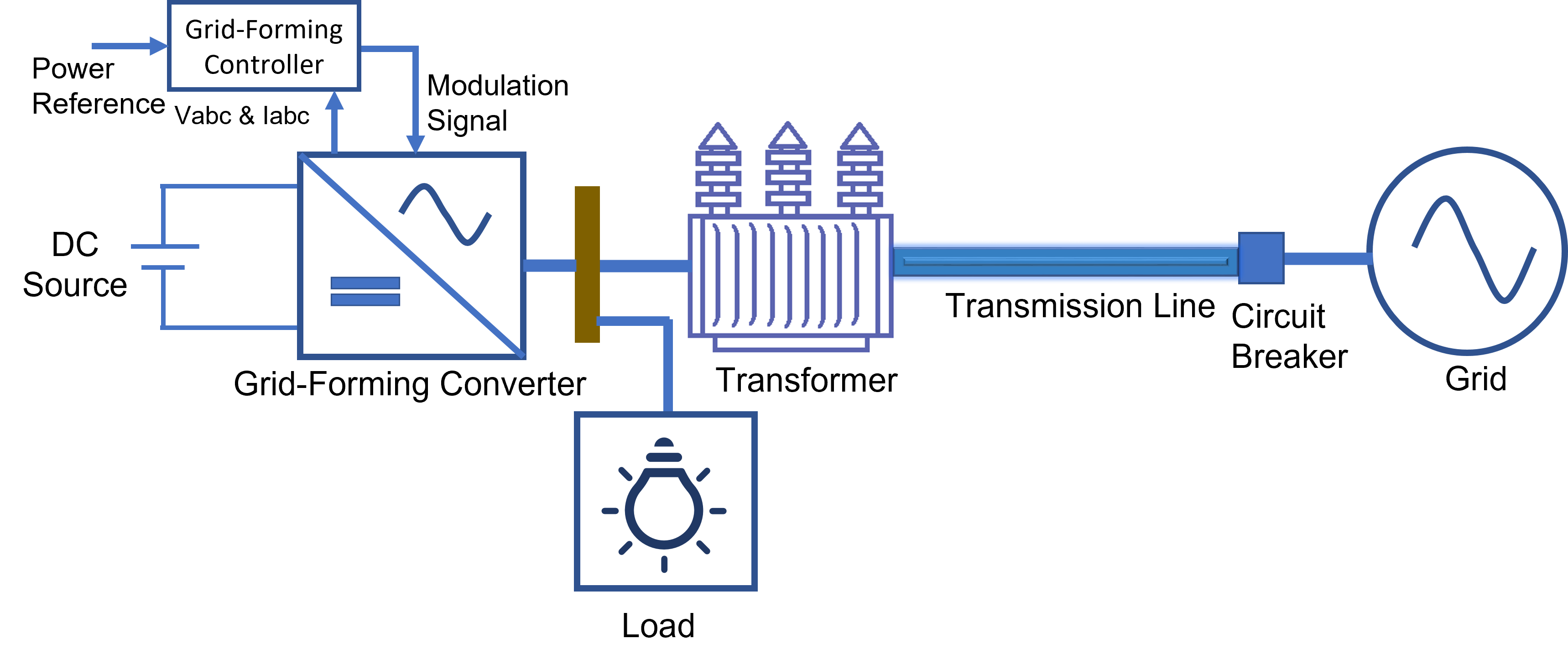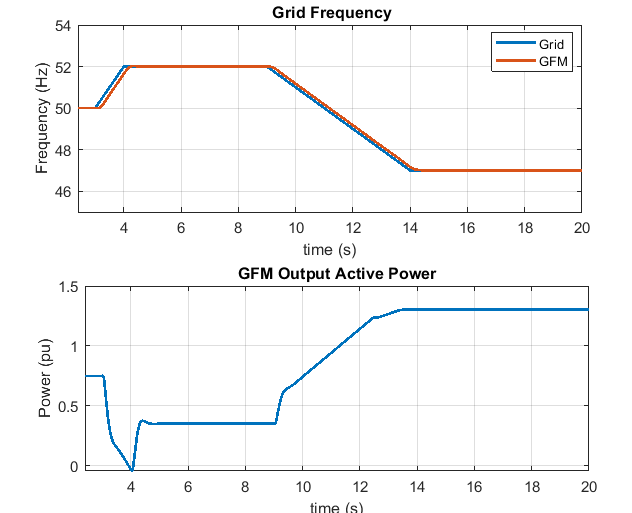Power Converter Circuit and Control Design with Simscape
Power Converter Circuit and Control Design with Simscape
Power converters are basic building block for various electrification applications such as motor drives, chargers, automobile, aerospace, distributed generation, renewables, battery energy storage systems, and consumer appliances. A modern power grid comprises multiple distributed generation (DG) units with power converter interfaces. These DG units are connected at distribution and sub-transmission voltage level. With the rise of power electronics converter-based resources and the gradual reduction in numbers of synchronous machines, contemporary power systems face challenges with low inertia and limited short-circuit current capacity. These challenges cannot be solved with traditional grid-following converter control based on grid measurements and phase locked loops. A better alternative to the traditional grid-following converters are grid-forming (GFM) converters.
Description and Performance Evaluation
Grid-forming converters offer the inherent benefits of traditional synchronous machines, including inertia, damping, fault current, active power control, and reactive power control. In GFM converter system, the converter control strategies mimics the dynamic response of the traditional synchronous machine. This helps the power system to operate in a stable condition against various system disturbances. The GFM converters operate autonomously, respond to the grid transients without external commands and offer black start capability.
This design solution presents a generic GFM converter design and its transient response analysis using Simscape™ Electrical. The design solution demonstrates grid-forming capability that you can use for integration of photovoltaic system, battery energy storage system, or wind power system. It provides an alternative inertia emulation technique, configurable control loops, different current limiting methods, and is suitable for a wide range of network strengths. This workflow offers a platform to design and test grid-forming control. You can also check conformance to grid codes.
This figure shows the GFM converter response for the wide change in grid frequency as mandated by GC0137 grid code standard. The grid frequency first increases from 50 to 52 Hz at the rate of 2 Hz/second. Then the grid frequency decreases from 52 Hz to 47 Hz at the rate of 1 Hz/second. GFM converter must be able to operate in these tough frequency situations.
Setup
- Clone the repository and add it to your MATLAB® path.
- Open GridFormingConverterWithSimscape.prj to get started.
- To open the example, use the project shortcut buttons in the toolstrip.
- Requires MATLAB R2023a or later.
Copyright 2023 The MathWorks, Inc.
Citar como
MathWorks Simscape Team (2024). Power Converter Circuit and Control Design with Simscape (https://github.com/simscape/Power-Converter-Circuit-Control-Simscape/releases/tag/23.2.1.4), GitHub. Recuperado .
Compatibilidad con la versión de MATLAB
Compatibilidad con las plataformas
Windows macOS LinuxEtiquetas
Community Treasure Hunt
Find the treasures in MATLAB Central and discover how the community can help you!
Start Hunting!Descubra Live Editor
Cree scripts con código, salida y texto formateado en un documento ejecutable.
Script_Data
Tests
Models
Overview
Script_Data
| Versión | Publicado | Notas de la versión | |
|---|---|---|---|
| 23.2.1.4 | See release notes for this release on GitHub: https://github.com/simscape/Power-Converter-Circuit-Control-Simscape/releases/tag/23.2.1.4 |
||
| 23.1.1.3 | See release notes for this release on GitHub: https://github.com/simscape/Power-Converter-Circuit-Control-Simscape/releases/tag/23.1.1.3 |
||
| 23.1.1.1 | See release notes for this release on GitHub: https://github.com/simscape/Power-Converter-Circuit-Control-Simscape/releases/tag/23.1.1.1 |
||
| 22.2.1.0 | See release notes for this release on GitHub: https://github.com/simscape/Power-Converter-Circuit-Control-Simscape/releases/tag/22.2.1.0 |






